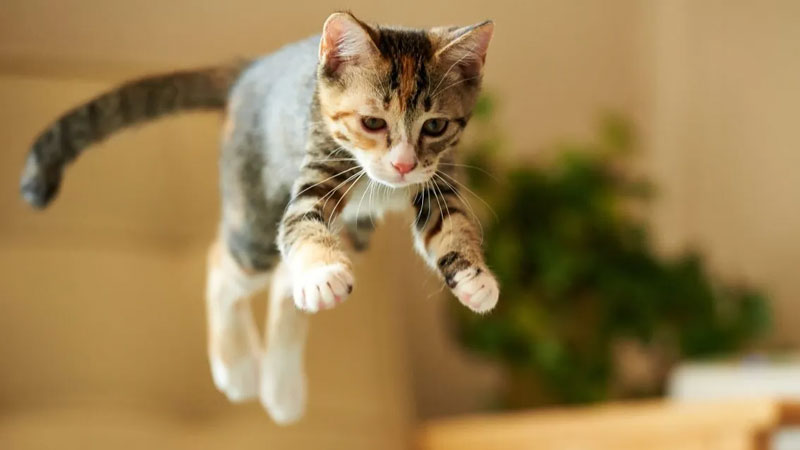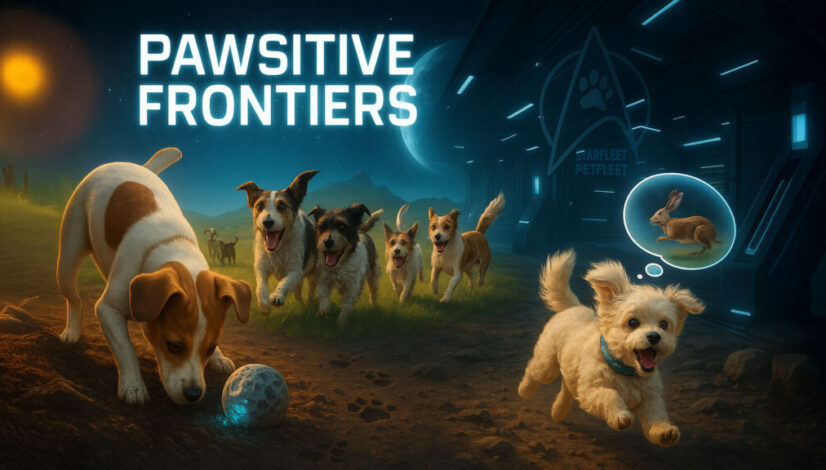Pawsitive Frontiers – Wild at Heart
Wild at Heart: Do Our Pets Still Have Instincts from Their Ancestors? By Cadet 1st Class Aurelie Doucet
Have you ever watched your cat stalk a toy mouse or your dog dig furiously in the backyard and wondered—why do they do that? Despite their lives of comfort and kibble, our pets still carry the instincts of their wild ancestors. In Wild at Heart, we explore the primal behaviours hiding just beneath the surface of our furry companions.

The Hunter’s Instinct: Why Cats Still Stalk and Pounce
Domesticated cats may curl up in cozy beds, but deep down, they’re miniature hunters. Their ancestors were solitary predators, relying on stealth and patience to catch prey. Even well-fed house cats exhibit this behavior—stalking toys, pouncing on moving objects, and sometimes even “gifting” their owners with a captured bug or rodent. Their playful attacks? Pure instinct at work.

Dogs and Their Pack Mentality
Dogs, descended from wolves, have a strong pack instinct, influencing their need for companionship and social hierarchy. They often follow their human “leader,” look to their families for structure, and even show protective behavior over their territory. Their love for playing chase, fetching, and howling all tie back to their wolf-like ancestors.

Digging, Hoarding, and Nesting—Nature’s Backup Plan
Why do dogs bury bones or cats knead blankets? These behaviors stem from their survival instincts. Wolves buried food to save it for later, while wild cats prepared a soft nesting spot before resting. Even small pets like hamsters store food as if preparing for lean times. Though they have steady food supplies now, these habits persist.

Zoomies: The Wild Side Unleashed
Ever notice pets suddenly sprint around the house in bursts of energy? This could be linked to wild instincts where sudden movement helped animals escape predators or burn excess energy after a hunt. Whether it’s a dog circling the yard or a cat doing acrobatics off furniture, it’s a glimpse into their untamed nature.

Do Pets Still Dream of the Wild?
Studies suggest that pets, especially dogs, dream just like humans—often reliving their daily experiences. But could they still dream of chasing prey or exploring vast landscapes like their ancestors? It’s possible their minds still echo ancient survival patterns.

Conclusion:
Even though our pets live in cozy homes with regular meals and soft beds, their wild instincts are still very much alive. From a cat’s stealthy pounce to a dog’s protective bark, these behaviours are echoes of their ancestors’ survival strategies. By understanding these natural instincts, we can better appreciate and care for our furry companions, honouring the wild hearts that still beat within them.
Further Reading:
-
Dogster: This article delves into the ancestral behaviours of dogs, such as spinning before lying down and digging, linking them to their wild origins. – https://www.dogster.com/lifestyle/understanding-your-dogs-ancestral-instincts
-
Animalko: Explore 15 everyday dog behaviours, like howling and face licking, that are rooted in ancient survival instincts. https://animalko.com/dog-instincts-from-their-wild-ancestors-hidden-in-everyday-behavior/
-
Pawdown: Discover how adorable dog habits, from toy burying to circling before sleep, are actually inherited from their wild ancestors. https://pawdown.com/10-adorable-dog-behaviors-that-are-actually-instincts-from-their-wild-ancestors/
These resources offer deeper insights into the instinctual behaviours of our pets, helping us connect more closely with their natural histories.



